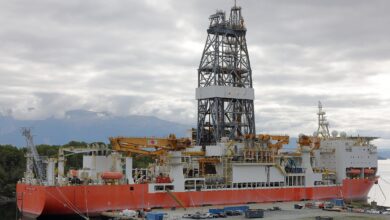IADC crane stats point to need to improve roustabout training

By Amy Rose, IADC director of external relations
The roustabout position accounted for 32.24% of total recordable incidents and 32.5% of lost-time incidents (LTIs) in the US offshore, according to IADC statistics for cranes and crane operations in 2012. “These numbers are reflective of the kinds of information that we gather that indicate the roustabout job is in a very vulnerable position,” Dr Brenda Kelly, IADC senior director of program development, said on 17 July at the 2013 API Offshore Safe Lifting Conference in Houston. “These are significant enough that we need to take a close look at our training and expectation and how we are meeting the needs of those positions, specifically those of the roustabout.”
The statistics, based on 15 companies reporting more than 39 million total manhours, indicated a total of 185 recordable incidents and 37 LTIs, “which is a relatively small, amazingly small, number for the time worked,” Dr Kelly said.
IADC’s 2012 report also found that:
- Cranes were involved in 4.37% of total recordable incidents and 2.7% of total LTIs;
- Slings were involved in 6.01% of total recordable incidents and 10.81% of total LTIs;
- Mechanical material-handling operations were involved in 8.67% of total recordable incidents and 9.09% of total LTIs; and
- Crane/fork lift personnel were involved in 2.73% of total recordable incidents and 2.5% of total LTIs.
Dr Kelly also reported on the progress of the IADC Knowledge, Skills and Abilities (KSAs) project, noting that completion is expected by the end of the year. “The KSAs were originally published in June 2001 and included 12 positional KSAs. IADC defines KSAS as listed knowledge topics to comprehend, skills or abilities to demonstrate and suggested performance measures for each,” she said.
The current project will expand the KSAs to include all rig positions, onshore and offshore. Nine teams of industry experts are defining and reviewing core and additional KSAs in the categories of quality, health, safety and environment; processes and procedures; onshore drilling operations; offshore drilling operations; subsea operations; marine operations; technical maintenance; facility management; and regulatory. A discussion is ongoing around the establishment of a separate category for crane operations.
“The project is well under way, but we still have a bit of work to go, and it is certainly worth the wait, but the KSAs project is expected to be concluded by the end of the 2013,” Dr Kelly said.
She also showcased the range of training and assessment tools from IADC that are available to the industry at large, including practical exercises for positions such as rigger and hoist operator; trainee forms or checklists to aid with the practical exercises; and instructor assessment forms. “We have available many practical exercises and training forms and tools for practical exercises. Skills assessment will be tied to the KSAs, and templates will be reviewed once the KSAs are published to be sure that each document meets the KSA guidelines,” Dr Kelly said. “We welcome member participation in all of our projects.”
For more information on the KSAs project or to get involved, please contact Brooke Comeaux, IADC competence & learning development specialist, at brooke.comeaux@iadc.org.





Dear Sirs,
Can you settle an enquiry
Does IADC have a format document on full technical details of Offshore Pedestal Cranes
Look forward to hearing from you on thiis